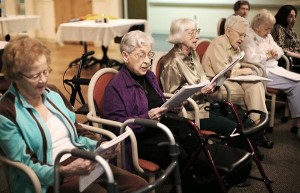Most elderly people who live in nursing homes still have the chance to develop their quality of life by means of joining some exciting physical and mental activities. These activities will help them in maintaining their self-confidence and self-worth.
Providing daily or weekly activities for the elderly is a biggest challenge to all nursing home staff. They have to link the activity to the personality of their residents. However, encouraging depressed senior citizens or those with low self-esteem to join the activities is the hardest part.
Nursing home staff should conduct a therapeutic activity so that the elderly people can benefit from it. In this article, we will give you the list of the recommended activities for older people living in nursing homes.
Counselling
Talking to the elder residents one by one is recommended. Nursing home staff should assess their residents about their physical and emotional status. This activity is helpful since you will know what activities they want. Senior citizens living in nursing homes have a very low self-worth since they think they are already forgotten by their loved ones. Simply talking to them will help them develop their confidence, self-esteem and self-worth.
Early Morning Group Exercise
Early group exercise is the best morning activity for senior citizens. It includes stretching, mild bouncing and kicking. Exercise provides better mental stimulation and physical activity to the elder residents. It also prevents them from having heart and lung problems. Nursing home staff can also utilize gaming consoles such as xbox Kinect or Wii as an exercise tool for people who are in wheel-chairs.
Art activities
Painting is known to be the best mental activity. It helps elderly people think actively. By doing this activity, senior residents are prevented from other mental disorder such as dementia and Alzheimer’s disease. Painting can also relieve series of arthritis attack.
Agricultural activities
Older people are known to be good at this activity. They like to grow plants, trees, flowers in pots. Although some of the residents can no longer do this activity due to sickness. This activity promotes better mental stimulation and muscle activity.
Music Therapy
Music has the capability to uplift the mood and spirit of every person. Nursing homes should include this in their daily activity since it promotes mood relaxation. Residents can also sing and play music together since it promote bond and comfort to one another.
